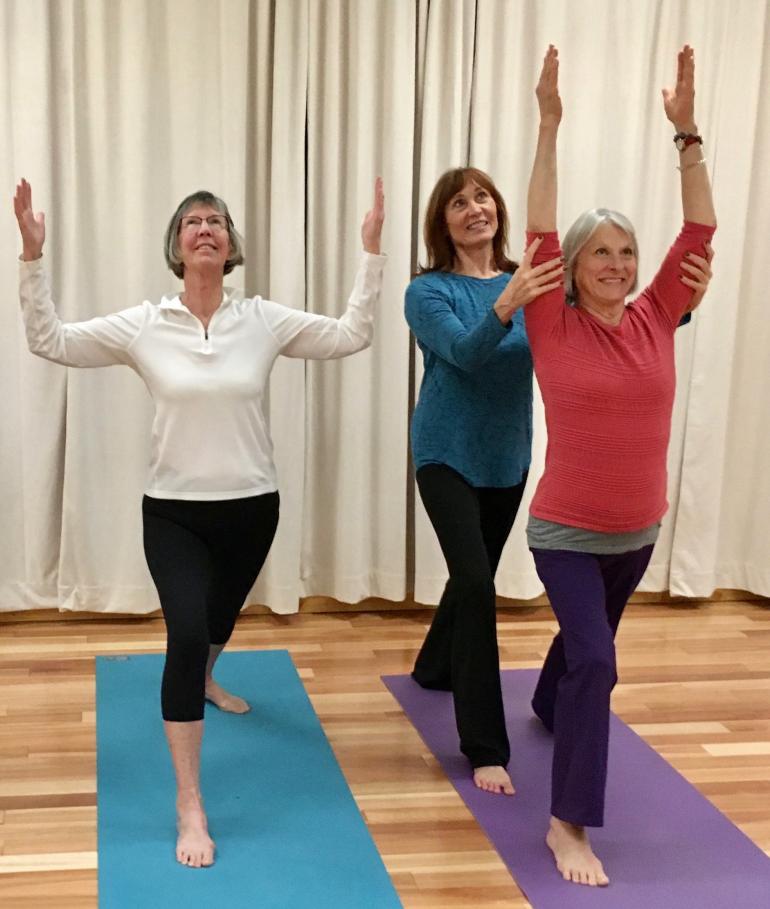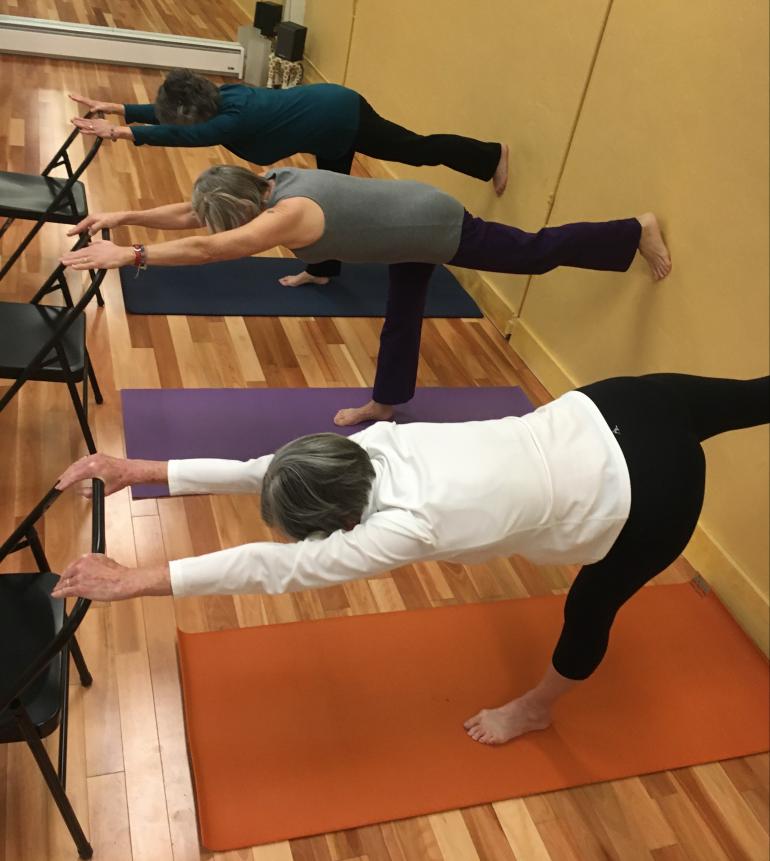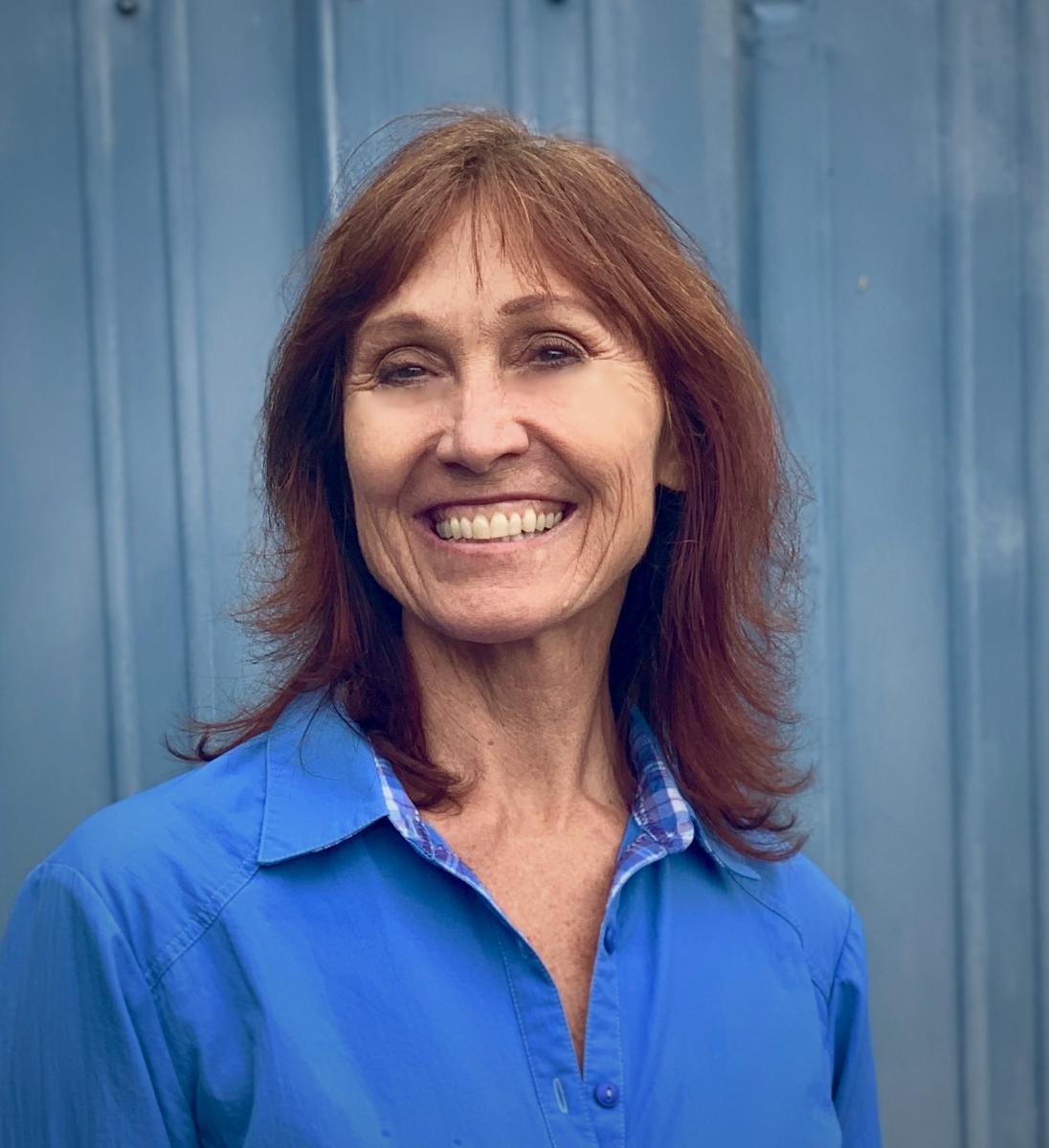YOGA for Boomers and Beyond
According to the ancient wisdom of Yoga and Ayurveda, we human beings spend a lifetime transitioning through four different stages, each loosely spanning 25 years. It is often in the transitions between these stages where we experience our greatest challenges. The key to living in a state of grace lies in recognizing the natural processes of aging from birth through maturation into self-expression and finally personal reflection.
The funny thing is, whenever I mention healthy aging there is an immediate assumption that aging signifies getting old, as if it were a problem. However, the truth is that even as we are living, we are aging one day at a time. Growing old is a privilege and the practice of yoga offers effective tools to help us age well while enjoying all stages of life.
As you read, consider how the practices of yoga can and should be addressed throughout life. There are many complementary approaches allowing you to transition gracefully through the years while evolving physically, emotionally, intellectually, and spiritually.

The first phase of life is childhood, known in yoga as the student stage extending from birth into the mid-20s. It is time for play, imitation, and education. It is a time for seeking enjoyment and experiences as well as learning self-care disciplines. It is a time for gathering knowledge as one learns about relationships with family, community, culture and the world at large.
Yoga Practice during the student stage is best approached at an activity level that builds physical strength and stamina while developing mental discipline. Because the student tends to be more easily distracted, a vigorous flow (vinyasa) in a traditional series offering playful imitation of asana (postures) serves to provide guidelines with little room for wandering. The traditional form of Astanga was specifically designed for the adolescent boy who needed a strict routine to remain focused. As this discipline traveled to the west, it became what we now know as vinyasa or flow yoga.
The second stage of life is known as adulthood or the householder (ages 25 – 50). This is the stage for taking what we have learned as students and putting it into action. It is a time of self-discovery, enterprise, and adventures. For many this means stepping into gainful work in order to meet one’s material needs. It also is a time for both traveling and setting up a home base and, for many, raising a family. Obviously, this is a busy time full of responsibilities which can result in higher stress and a lack of self-care in the midst of taking care of everyone else.
Yoga practice for the householder should offer effective tools for stress management. With so much energy focused outward, yoga needs to focus inward. Meditation, breathwork, and longer held asanas (posture) will continue to build strength and stamina while nurturing peace of mind. To counteract tensions from a householder’s personal and professional roles, yoga is a time for cultivating a much-needed balance with less doing and more being.

The late adult stage or elderhood (ages 50 - 75) is traditionally called Hermitage or the Forest Dweller.Our current culture recognizes this age as Baby Boomers. In ancient times, the Forest Dwellers would leave their homes and reside in a small hermitage just outside the village. This is what we term retirement. Life at this stage is meant to become simpler so one can devote more time to inner reflection and spiritual practices. This is the age of wisdom where all of the experiences in the first two stages, childhood and adulthood, can lend support and guidance to those following in their footsteps.
However, you may be one of the Baby Boomers with a drive to keep going strong—holding onto the householder phase by continuing with a full and busy life instead of settling down. Keep in mind that if you continue to overdo, your nervous system gradually builds up muscle tension causing soreness and achiness. Lifelong patterns can cause the skeleton to move out of alignment resulting in dysfunctional movement that puts pressure on nerves and breaks down joints causing stress and fatigue.
Some blame aging as the cause of these discomforts. Nevertheless, the aging process is far more voluntary—under your control—than you may realize. It is not the process of aging that creates tension and discomfort but the result of our modern lifestyle. We tend to believe that aging means growing weak and tired when in reality we grow weak and tired if we fail to sustain a healthy level of physical activity along with deep rest. Between seven and nine hours of sleep per night is ideal for the average adult in order to prevent premature aging. Are you sleeping enough?

Yoga for the Forest Dweller (aka Baby Boomer) should transition to a gentler physical practice to aid the body’s recovery from a lifetime of use and perhaps overuse, abuse and injuries. This does not mean passive practice. In fact, at this stage a well-balanced yoga practice should include elements of functional alignment, strength building, muscle toning, breathwork, flexibility, balance and agility. There’s no need to eliminate challenging poses as long as they are modified to ensure joint safety and stability. Moving slower and more mindfully allows for much needed individual modifications along with a deeper connection to the benefits made possible.
The final stage (75 – 100) is the Renunciate or, as I like to call it, Sagedom.This is the time to detach from the world in pursuit of self-realization, immersing in spiritual practices that make for a graceful exit, greeting death as simply another stage of life.
Yoga practice for the Sage moves more into the realm of meditation and contemplation, along with the continuation of physical care.
Keeping these four stages in mind, you may recognize how a person can remain attached to one stage or another, such as never wanting to grow up and take on responsibility or never releasing responsibilities to enjoy retirement. We live in a society that rewards busyness and believes we should stay young forever sending the message that aging equates to growing old. Yes, we age, but we can also remain vibrantly alive. The full development of each stage is imperative for a smooth entry into the next. We don’t actually leave anything behind. It all becomes integrated into the tapestry of our life.

How can you create balance through the practice of yoga in your life?
My advice:Focus on that which truly aligns with the stage in which you are living. Be true to yourself and enjoy the transition through all ages while honoring the Sage within.
Leave a Comment Here